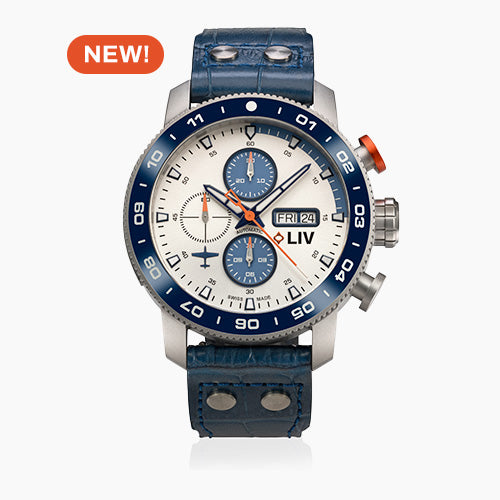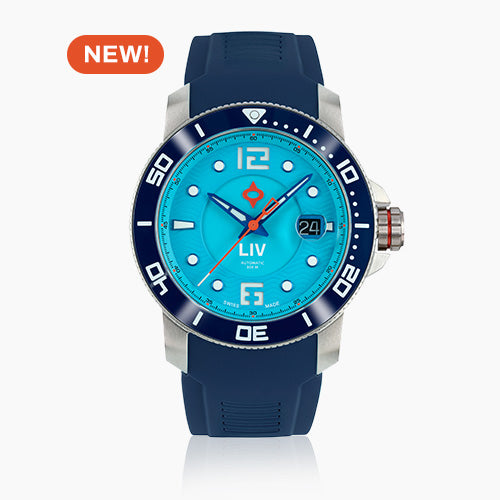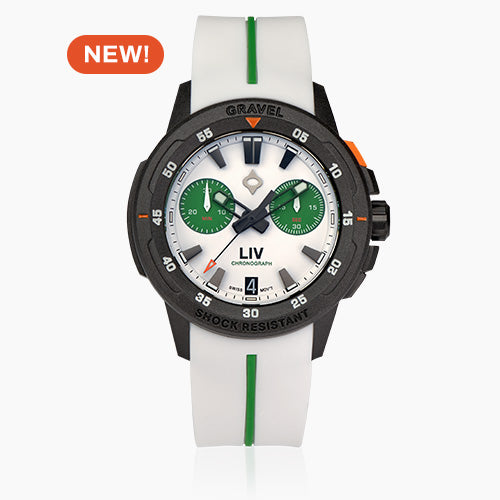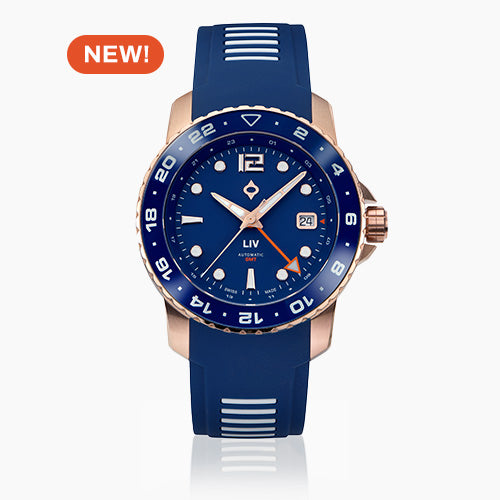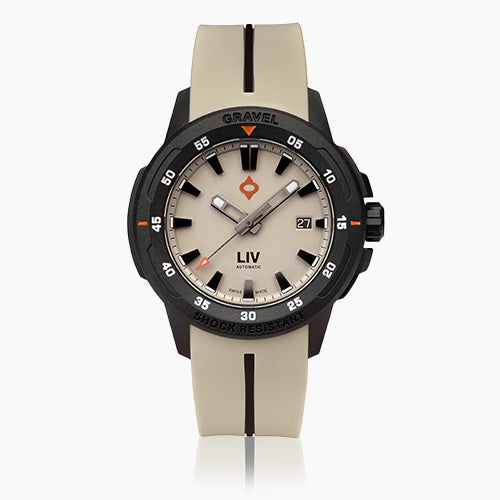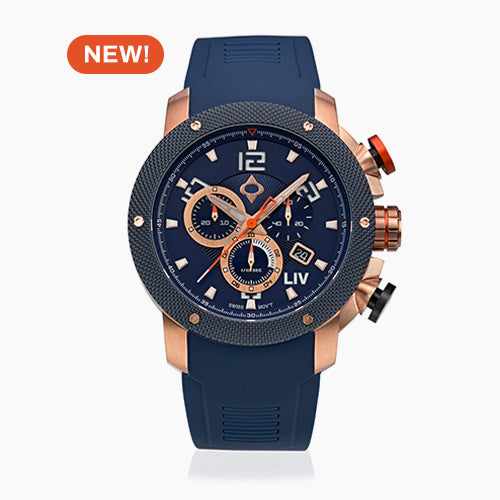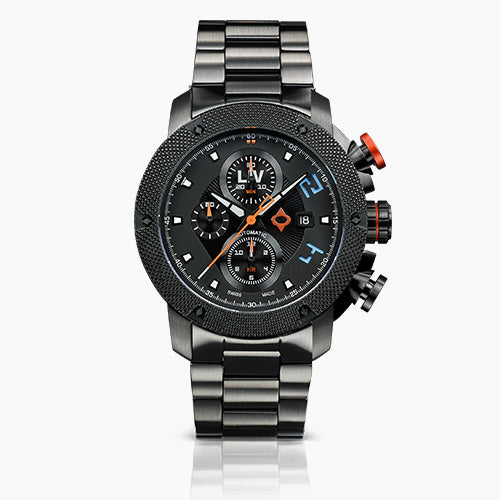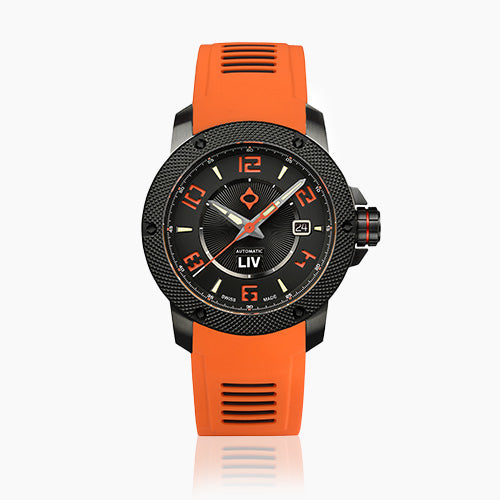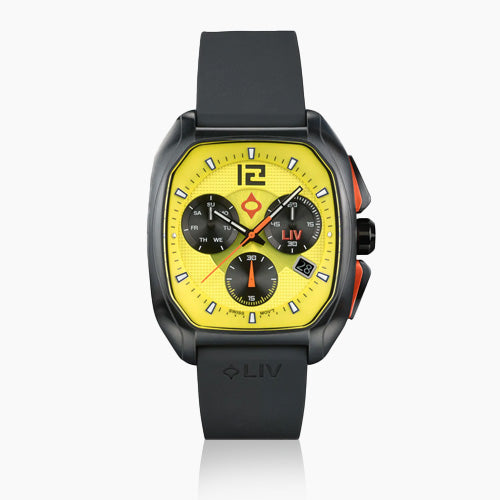
What makes a LIV watch? Part 3: The design process
Share
"Design is not just what it looks like...design is how it works."
Welcome to the third article in our five-part series on ‘What Makes a LIV Watch?’ In the first two articles, we looked at what were the roots for our brand’s inspiration, as well as the decision-making processes that need to be considered before a watch can even be designed, let alone manufactured. We can now turn to what is probably the most creative aspect of an entire watch-making project: the design process.
Steve Jobs, the legendary co-founder of Apple, once said, “Design is not just what it looks like and feels like. Design is how it works.” The same is as true of watches as it is of smartphones and tablets. Not only must we ensure that our watches look and feel great, but they must also function properly and be fit for purpose. But that is easier said than done - and that is why the design process is so crucially important to us.
Our design ethos
What is the principal or overarching design ethos of LIV Watches? Chaz, our co-founder and director of production, says; “Unique, bold, innovative - with a touch of fashion.” He wants LIV’s watches to be instantly recognizable and distinct, yet never garish or in-your-face. It’s the difference between having friends and colleagues genuinely intrigued by the watch on your wrist versus shielding their eyes and looking away in sheer horror.
Our design attributes
Every brand has distinct design attributes. They are the visual ‘clues’ that distinguish one brand from another, sometimes in even the smallest details. LIV Watches is no different, and, in fact, we take our design ‘personality’ very seriously. Some of the factors that define the design aesthetic of the LIV brand include:
- Remember the brand ethos: Chaz speaks about how everything we do bears the brand’s principal ethos in mind, i.e., to design and build superbly crafted, high-quality Swiss Made watches that are affordable in their category.
- Adhere to the brand ethos at all times: the team keeps the LIV brand’s ethos uppermost in their minds during the entire design phase, whether the model being designed is of the more sporty or more classic style.

- Stay rugged: A quintessentially rugged style is central to all LIV watches. This is reflected, for example, in the case size, the styling of the bezel and dial, the selection of straps, and other features of our watches. It’s one of the main reasons why we opted to be a men’s watch brand from the beginning.
- Colors are cool too: Even if our styling tends to be masculine and rugged, we’re not scared of colors here at LIV Watches! That’s why we’ve used bold colors that ‘pop’ such as bright orange, brilliant turquoise, and yellow that blings. Perhaps it has to do with our roots here in beautiful Miami with its turquoise waters, glorious sunshine, and Art Deco-inspired hues.

Some of the Miami colors that inspire us
Our design approach
First, what is the concept of the collection itself? What does it represent? Conceptually, each watch model represents something unique. For example, the GX1 represented ‘future toughness,’ as Chaz puts it. It was to be the watch for a ‘man’s man.'
Second, the concept itself can have a measure of riskiness or daring about it. The Rebel watch, which was a follow-up to the hugely successful GX1 collection, was more of a stab at a new design concept. The goal was to “see how far we can push this,” as only Chaz can put it. But even a ‘risky’ venture can have its logic, as was the case with the bold, square-dial Rebel collection. After all, Chaz points out that “No one runs around saying. ‘I love round watches’! So, the Rebel became our breakthrough watch - it was all about the shape."

Third, the team must figure out the features that will match the concept. So, for example, the main concept for the Rebel watch was that gorgeous, eye-catching square case. Yet an important design feature of the Rebel was the quartz chronograph around which the watch was to be built. And, boy, did that pay off! Still today, the Rebel remains the best-seller of all the LIV collections,’ along with the baby that started it all, the GX1.
Fourth, the overall aesthetic of the watch is not as pronounced or ‘set in stone’ as one might think. The design team obviously has an idea of what the design of a watch will be, which Chaz calls “having a design concept in your head.” But that aesthetic can evolve during the design process for any watch. Inspiration will clearly play its part, but not always within a pronounced, definitive design paradigm. The reality is more organic and less structured than that.

Chaz hard at work on design with our collaborator and friend, TJ Eisenhart
Practical design features
An important aspect of the design stage for a watch regards the specific features that the watch will require. These could be considered the practical elements of any watch collection and include:
- The Case: According to Chaz, this is the first thing you decide on. That includes the sizing, shape, materials, and other aspects of the case. The case you choose will determine the dial and other features of the watch.
- The Movement, including complications: which one and why? You need some functionality and a lot of what you design depends on the movement you choose. The movement can also be an important factor in deciding on what exact case size to go with.
- The Dial: this includes the color/colors thereof, the hands, the placement of sub-dials and windows such as day/date, and so forth. After all, the dial is the literal ‘face to the world’ of any watch, and so its design and styling are crucially important.
Design steps
This is how Chaz describes the way a watch model is designed by the LIV design team in the simplest way possible (and remembering that there is overlap between the different stages):
- The Rough Stage: You commence with a pencil drawing or rough sketch. This is a fairly basic design and isn’t too involved in terms of the dial and other features. The size of the case is obviously decided in conjunction with the movement chosen.
- The 2D Stage: Now the rough sketch becomes a more detailed, technical drawing. The movement is now included inside (i.e., drawn) the 2D drawing. It’s at this stage that far more detail is included, for example, how the dial will look, whether the indexes need to be larger or smaller, etc.
- The Sample Stage: Now that the watch has been fully drawn in quite some detail, this is the stage when you do the samples or prototypes of the watch model. This is usually made out of stainless steel. The prototype gives the design team a far better ‘feel’ for how the watch looks, how it functions, and even how the watch may wear on the wrist in terms of size and weight.
—Chaz
Watch freak and Co-Founder at LIV Watches
- The Further Prototype Stage: The initial sample/prototype will require further prototypes. These additional prototypes will facilitate further changes or tweaks to the 2D drawing of the dials, sub-dials, and other features of the watch. It’s a case of ‘going back to the drawing board,’ so to speak. Sometimes even multiple prototypes may be needed, just to get it right. Chaz recalls how they felt lucky when our very first watch, the GX1, required only three prototypes before being approved by the design team. Some watches require far more iterations than that, trust us!
Design evolution
One thing is to remain true to one’s design persona as a watchmaker, quite another is to be stuck in a rut! So, has there been a definitive evolution in the design ethos and overall aesthetic of LIV Watches? Chaz has this to say: "the [design] core is still there but we test the waters with new ideas." For example, the P51 is a pilot watch that is a homage to the P51 Mustang, the single-seat fighter plane used during World War II and the Korean War. It’s a plane that Chaz is obsessed about and that appeals to his inner aviation fanatic!
Design-wise, the LIV P51 watch was a mix of the tried and tested and the new and innovative. He speaks to this melding of legacy and new design concepts by saying, “We stripped down a GX1 and then added some features on the dial and bezel, including using titanium. The ceramic bezel was added to provide unique ‘flavor’ to the pilot watch, just to be different”. He loves that watch as much as he’s in awe of the fighter plane that is its namesake!

LIV Watches has two ‘core’ watch designs that have been phenomenally popular in all their various incarnations - the GX1 (the round one) and the Rebel (the square one). Chaz wants LIV to expand these winning designs even further, while always innovating with other styles and shapes. He also acknowledges that, like any serious watchmaker, he is also inspired by classic/vintage watches. “Yeah, you do need to go back. The classics are always the classics,” he says. He also reminds everyone that nobody ever remembers the watches that bombed!


Ultimately, Chaz believes that creating a collection is a type of journey. “I don’t think there’s one set of rules regarding the design process. It’s a process which can take you in many different ways."
It’s certainly an approach that has garnered many fans worldwide.
About the Author
Esti Chazanow, Co-Founder at LIV Watches
Esti's passion for men's watches led her to co-found LIV Watches—a microbrand dedicated to connecting watch collectors with high quality, limited edition, Swiss Made timepieces at prices they can afford—and the rest is horological history.
